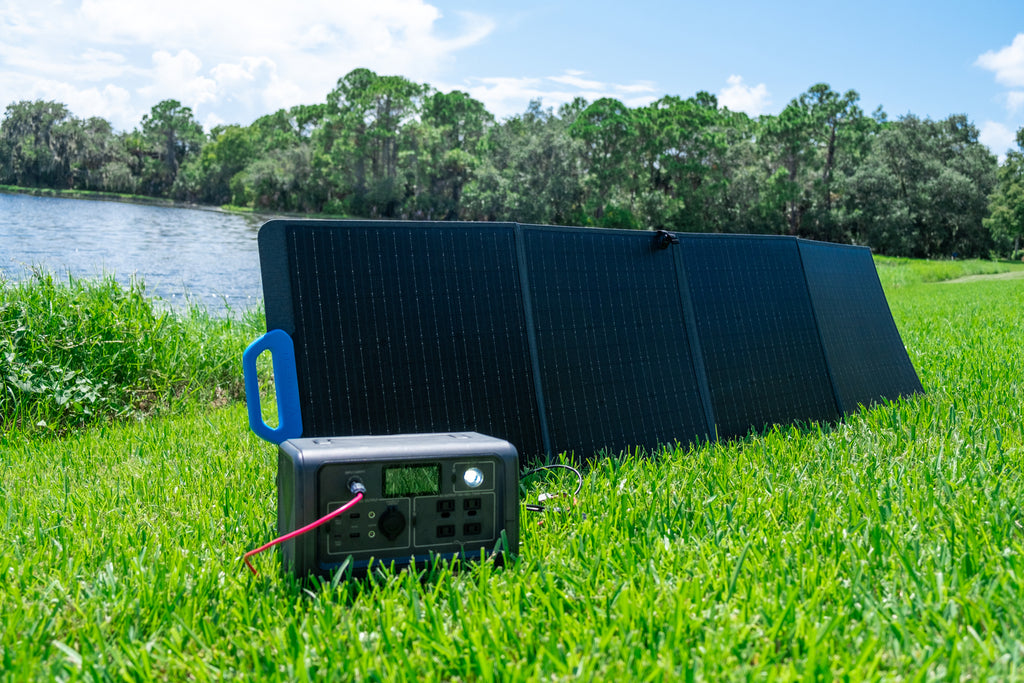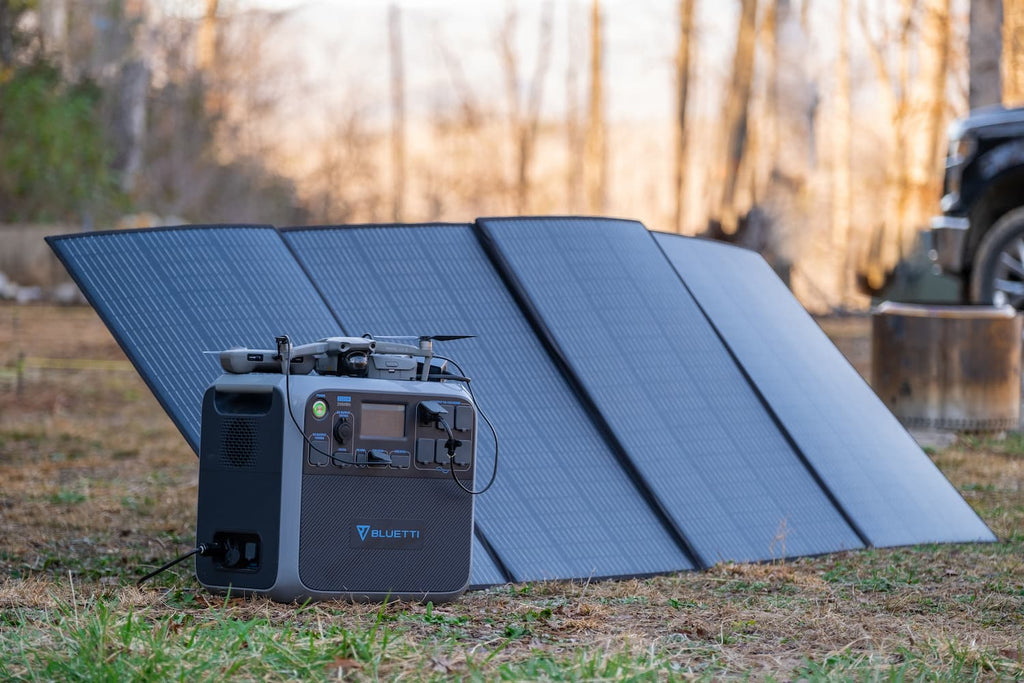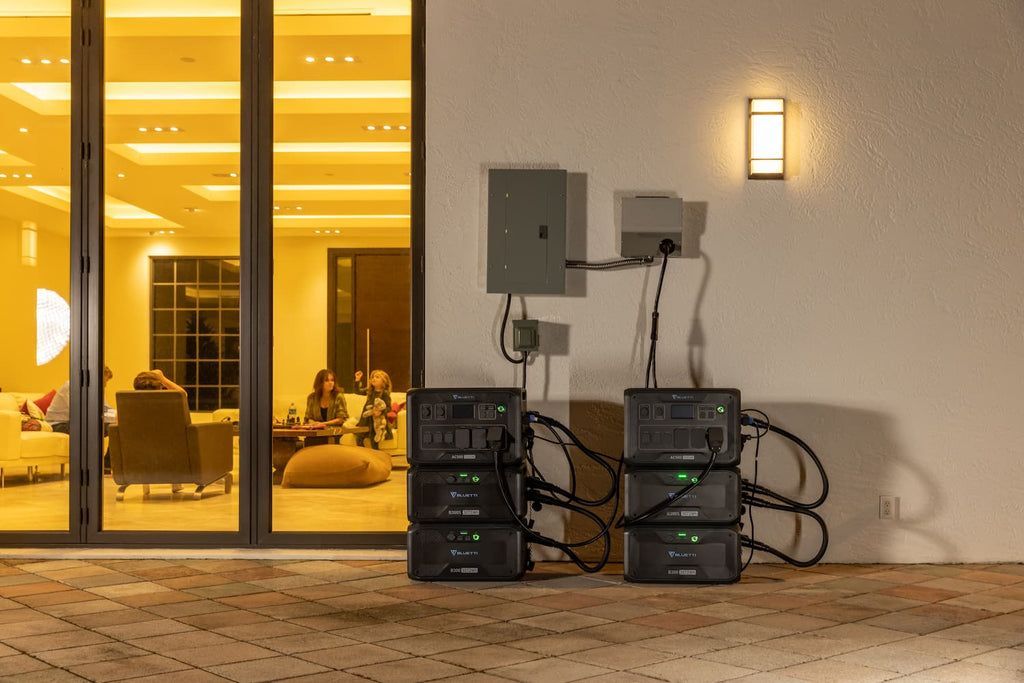With growing concerns about climate change, the trend for using environmentally friendly products is on the rise. So, the use of electric furnaces as a more sustainable and safe option than conventional oil and gas furnaces for keeping homes warm is increasing.
Yet, as energy prices are rising, understanding how much electricity an electric furnace uses is crucial to maximizing your savings. The power requirements of an electric furnace are not exact, as they depend on its model and time of use.
This post will share all the necessary information about an electric furnace's electricity requirements and recommend cost-effective ways to run it.
How Many Watts Does an Electric Furnace Use?
If you have ever analyzed the power requirements of different appliances in your home, you will find that heating and cooling devices consume the most wattage. Electric furnaces, as heating appliances, are no exception.
The wattage requirement of an electric furnace varies depending on its model but usually ranges between 10 and 50 thousand watts. However, to understand the exact wattage needs of an electric furnace, first, it's important to understand how they function.
Once you turn on your electric furnace, it will not operate continuously but will involve small breaks. For example, if you are running your furnace, it will go on a turn-off cycle for about 15 to 20 minutes after each hour. So, you can say that in 120 minutes of working, electric furnaces actually operate for around 70 to 80 minutes.
Due to these small breaks, an electric furnace uses fewer watts than labeled on them. Simply put, for a 20000-watt electric furnace its actual wattage requirement will lie around 13000 watts per hour.
Below is the table showing the actual watt requirement of different electric furnaces.
|
Labeled Watts |
Actual Running Watts |
|
30000 |
19500 |
|
25000 |
16250 |
|
20000 |
13000 |
|
15000 |
9750 |
|
10000 |
6500 |
How Much Electricity Does an Electric Furnace Use?

Electric furnaces are gaining popularity compared to their other counterparts, and this is for some good reasons. They are not only safer and eco-friendly options but also cost-effective and easy to install.
Electric furnaces are usually used for four months of winter, with 2 to 4 hours of daily operation. Their main components include a coil that produces heat, a blower that spreads this heat, a control system that manages operations, and ducts through which the hot air is circulated into the home.
The overall electricity needs of this unit vary depending on the size of the electric furnace. Generally, an average electric furnace used in most homes needs 20,000 watts. In a standard electricity unit, that is kWh, it would be 2 kWh. Further, it's important to remember that these are only labeled power requirements, and the actual needs are less than that.
The table below shows the monthly power requirements for different electric furnace models based on two hours of daily usage.
|
Labeled Electricity Requirements (kWh) |
Actual Electricity Requirements (kWh) |
Total Monthly Electricity Requirements (kWh) |
|
30 |
19.5 |
1170 |
|
25 |
16.25 |
975 |
|
20 |
13 |
780 |
|
15 |
9.75 |
585 |
|
10 |
6.5 |
390 |
How Much Does It Cost to Run an Electric Furnace?
The cost associated with an electric furnace could toll heavily on your monthly energy budget. On average, the cost of running an electric furnace for 4 hours daily is almost equal to the power consumed by all your other household appliances.
Your monthly energy bills only indicate costs for your total power consumption and not for each appliance. So calculating the cost of running an electric furnace requires information about three fundamental aspects including your time of use, cost per kWh in your state and size of the electric furnace.
For example, if you are running a furnace of 2 kWh for 4 hours daily, which has actual electricity needs of 1.3 kWh, and the cost per kWh in your state is $0.2, the monthly costs will be
Electricity needs of furnace X Hours of Operation X rate per kWh X 30 (Days in a month)
1.3kWH X 4 X $0.2 X 30 = $31.2
The table below shows the monthly and 4-month costs for various US states of a 2kWh electric furnace running for 4 hours daily.
|
State |
Rate Per kWh |
Monthly Costs |
4 Month Costs |
|
New York |
$0.205 |
$31.98 |
$128 |
|
New Jersey |
$0.162 |
$25.27 |
$101 |
|
Washington |
$O.103 |
$16.06 |
$64 |
|
Virginia |
$0.125 |
$19.5 |
$78 |
|
California |
$0.22 |
$34.32 |
$137.28 |
|
Florida |
$0.122 |
$19.03 |
$76 |
|
Maryland |
$0.144 |
$22.46 |
$90 |
|
Texas |
$0.125 |
$19.5 |
$78 |
|
Massachusetts |
$0.225 |
$35.1 |
$140 |
How Much Money Can Solar Panels Save You?
Solar panels can help you save significant amounts on your monthly utility bills. Solar panels capture sunlight to convert it into electricity. This means your energy source is free, and you only need a one-time investment to install a solar setup.
According to Forbes stats, a solar setup can help you save around $25500 to $33000 over the installation’s lifetime. This is indeed a huge savings. However, the upfront cost is an issue of concern, but BLUETTI Solar products offer a PRICE MATCH GUARANTEE, which ensures the lowest price of the product compared to its competitors.
Further, by choosing them, you can expect your cost payback within 5 to 7 years. Below discussed are two solar panels from BLUETTI that can help you go completely off the grid or enjoy significant cuts in your energy bills.
BLUETTI PV200 Solar Panel

Made with Monocrystalline cells, the highest-rated material for solar panel manufacturing, PV200 can effectively fulfil the power needs of most appliances at your home.
While its competitors boast an efficiency rating of 20%, PV200 has a 23.4% efficiency rating. This means that whether it's a cloudy day or off-peak sun hours, the panel can still produce enough electricity to power all your essential gadgets.
Its ETFE coatings ensure its long life span and durability. Whether you are partying in your home's backyard or camping off the grid, its foldable design makes portability very convenient.
The product is compatible with all solar generators and can be installed easily with kickstands.
BLUETTI PV350 Solar Panel

This budget-friendly product has a power output capacity of 350W, which is enough to power a fridge, electric drill, laptop, drone, or similar appliance.
Weighing only 14kg, PV350 is foldable, easy to carry, and easy to install. Its 23.4% efficiency ratings ensure a continuous power supply even in bad weather conditions.
With its ETFE coatings and IP65 water resistance, the product is not only scratch-free and durable but also improves the transmittance of solar rays, which eventually results in high power conversions.
PV350 comes with built-in MC4 connectors that make it compatible to be attached with any solar generator.
How Many Watt Generators Do You Need to Run an Electric Furnace?
The size of the generator you need to run an electric furnace does not follow the one-size-fits-all equation. It depends on the size of the furnace. The more power your electric furnace requires, the bigger the generator you will need.
For a normal household, an average size electric furnace is enough to keep your home warm. It also depends on what capacity you are running your furnace. For example, if you want to maintain a temperature of 20°C, your furnace will consume more power than 15°C.
However, BLUETTI AC500 could be a go-to solution for all your power needs. Here is how it can help you.
BLUETTI AC500 + B300/B300S

This unit, with its 5000W output capacity and 1000W surge power, is enough whether your goal is to run an electric furnace or all other appliances of your home simultaneously.
Its built-in LiFePO4 battery has a capacity of 3072 Wh, which can be expanded to 18432 Wh with additional B300 batteries. Regarding its lifespan, it offers 3500+ lifecycles, which means a shelf life of 10-plus years with one charge cycle per day.
To ensure smooth operation, AC500 can be operated through Bluetooth, Wi-Fi, and the BLUETTI smart app. But that’s not all. To ensure you never run out of power, the unit allows charging through 6 different streams, including AC, solar, car, battery, generator, and AC+Solar.
Further, its 16 output ports, including wireless charging, make it compatible with all your home appliances. While its PRICE MATCH GUARANTEE makes it the most affordable choice. What’s cheery on top is its eligibility for a 30% Federal Tax Credit, which helps you save a significant amount of $1199 on upfront costs.
Are Electric Furnaces Expensive to Run?
A straightforward answer could be YES! Compared to other choices like a heat pump, electric furnaces are expensive to run. The average monthly cost of an electric furnace is around $100 to $120, while for a heat pump, it's around $40 to $50.
Additionally, if you plan to run your furnace with a solar generator, your system will only be able to run your furnace. While with other options like heating pumps, you can also run most of your home appliances along with your furnance.
However, if we consider reliability, ease of operation, and effectiveness of the system, electric furnaces are worth the money spent. So, eventually, the decision about whether electric furnaces are expensive or not lies in individuals' personal preferences.
Final Thoughts
Electric furnaces are good choices for keeping homes warm during winter. They do not emit toxic fumes, are reliable, and are easy to install. However, their associated cost could be a burden on your pocket. Thus, if you are planning for an electric furnace, running it through a solar generator is recommended.
BLUETTI solar generator cannot only help you with your furnace but also offer a reliable solution to go completely off the grid or cut your energy bills significantly.








































































